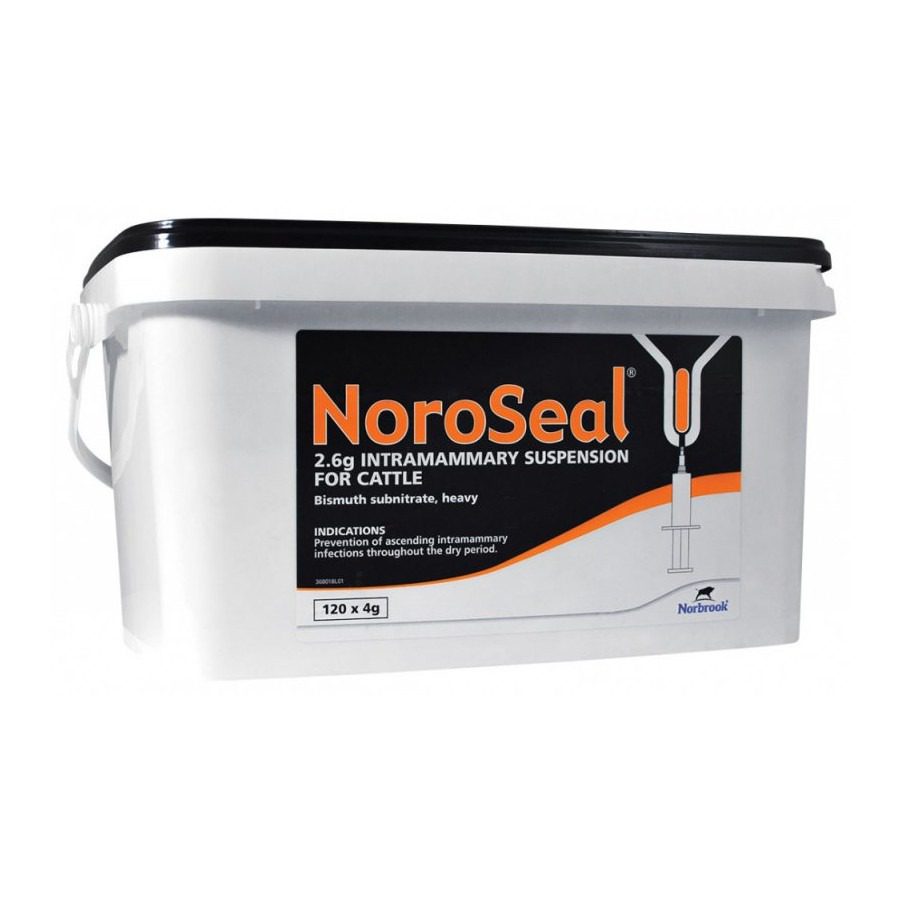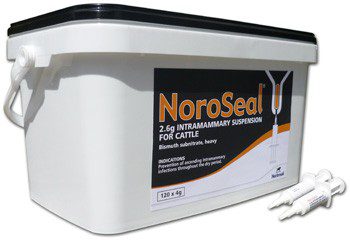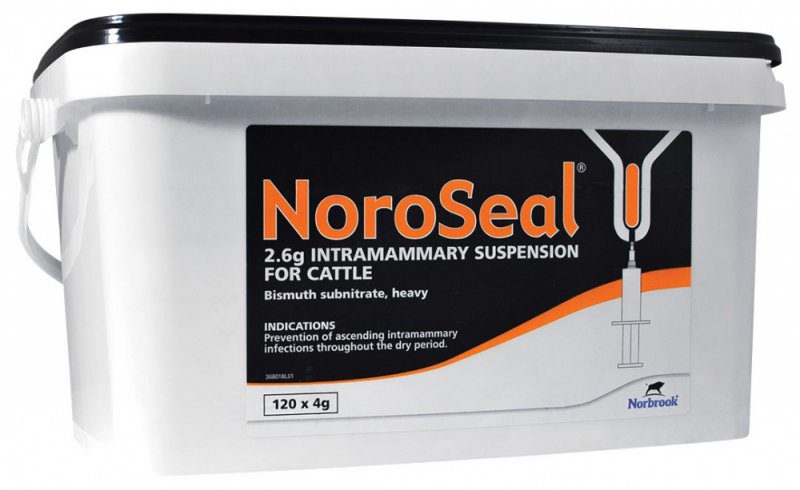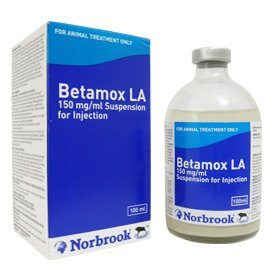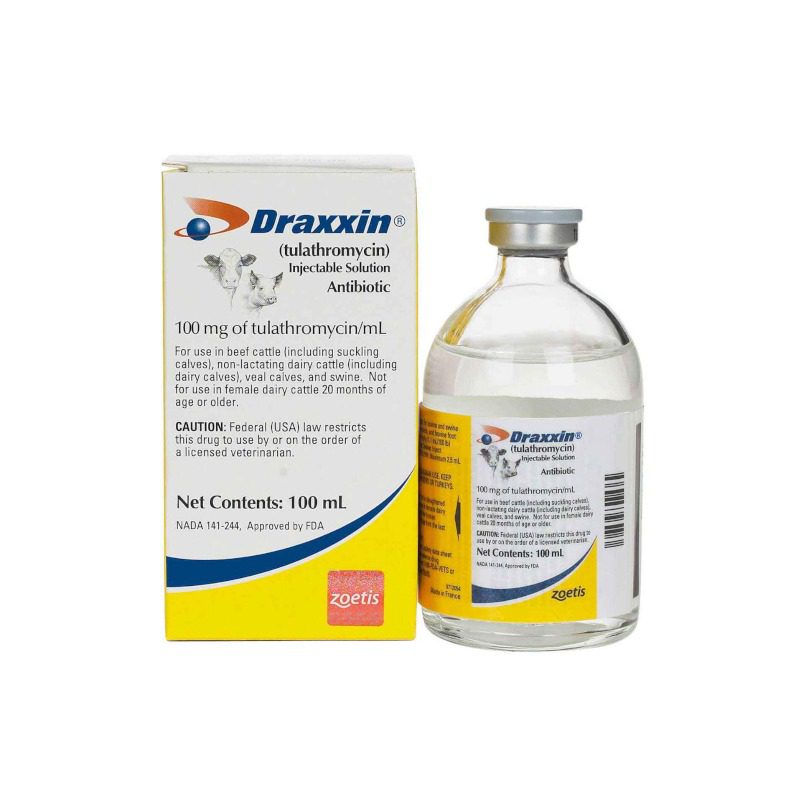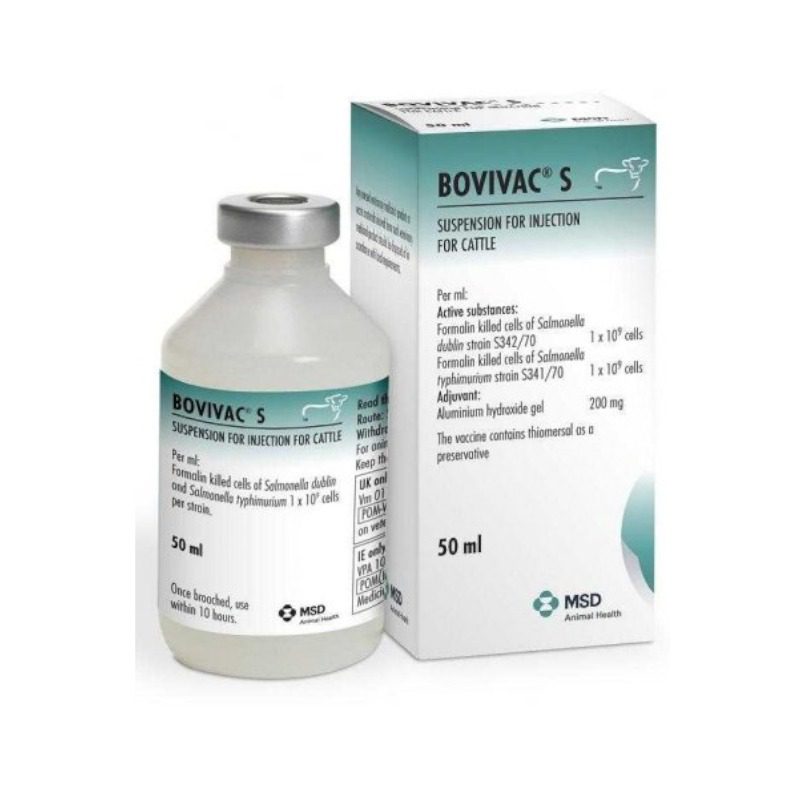Noroseal
PLEASE NOTE: A prescription issued by a UK registered vet (MRCVS) is required before this item can be dispatched.

Noroseal intramammary suspension
Product Description
Noroseal – Dry Cow Teat Sealant with Bismuth Subnitrate
Noroseal contains 2.6 g bismuth subnitrate in each intramammary syringe. It forms a clean, physical barrier to prevent infection during the dry period. You infuse one syringe per quarter immediately after the last milking. For cows free from subclinical mastitis, it can be used alone, though combining it with a dry‑cow antibiotic is prudent for at-risk animals.
Key Benefits
Blocks bacterial entry during the high-risk early dry period.
Zero withdrawal for milk and meat—safe for production .
Reduces clinical mastitis risk, especially when used with antibiotics .
Available in packs of 24 or 120 syringes with disinfectant swabs.
Prescription-only, ensuring veterinary-led treatment advice.
How to Use
Clean and disinfect teat thoroughly; air‑dry before use.
Infuse the entire syringe intramammarily into each quarter immediately after final milking.
Do not massage; follow with a suitable teat dip.
Employ strict aseptic technique to avoid introducing pathogens.
Precautions & Contraindications
Use only at drying-off, never during lactation.
Do not use in quarters with clinical or subclinical mastitis unless paired with appropriate antibiotic therapy.
Avoid contact with skin or eyes; wash thoroughly after handling.
Safe if ingested by calves at calving—no adverse effects.
Packaging & Storage
Supplied in packs of 24 or 120 syringes, each with a teat swab.
Store at room temperature; no special refrigeration needed
Dosage & Administration
- Infuse the content of one syringe of the product into each udder quarter immediately after the last milking of the lactation (at drying off).
- Do not massage the teat or udder after infusion of the product.
- Care must be taken not to introduce pathogens into the teat in order to reduce the risk of post-infusion mastitis (aseptic technique).
- It is essential that the teat is thoroughly cleaned and disinfected, with surgical spirit or alcohol-impregnated wipes. The teats should be wiped until the wipes are no longer visibly dirty.
- Teats should be allowed to dry prior to infusion.
- Infuse aseptically and avoid contamination of the syringe nozzle.
- Following infusion it is advisable to use an appropriate teat dip or spray.
Withdrawals
- Meat & offal: zero days
- Milk: zero hours
120x4g

